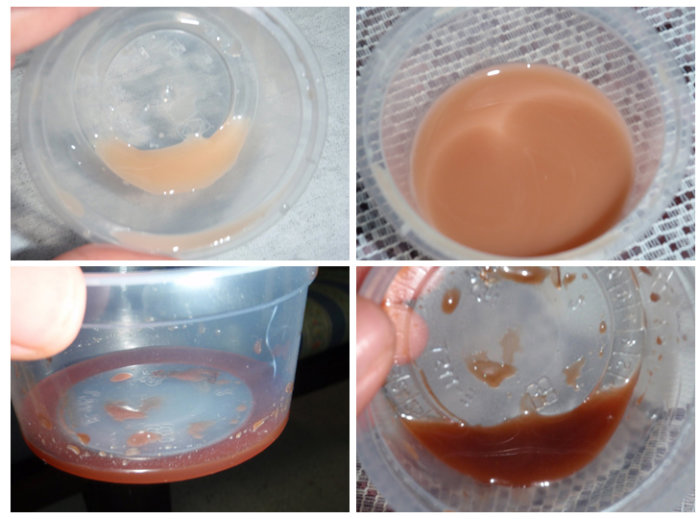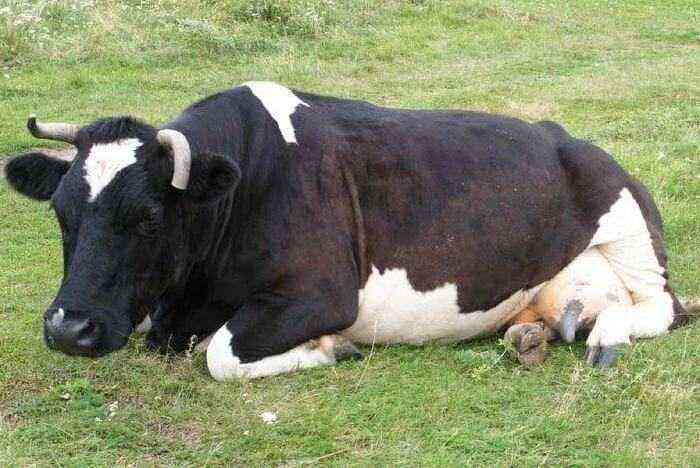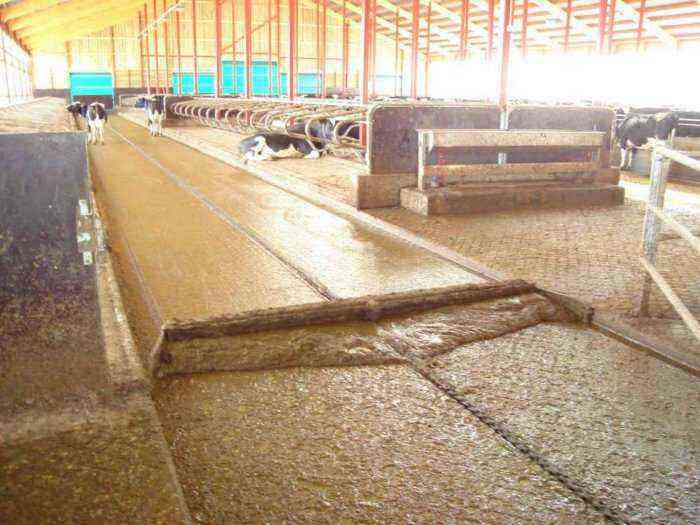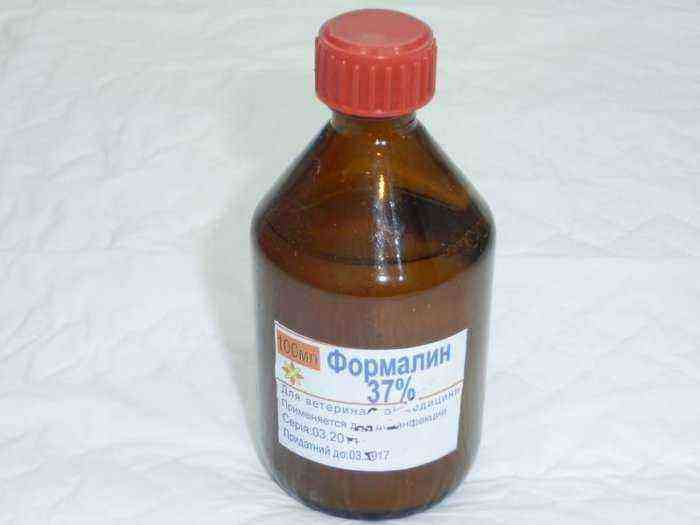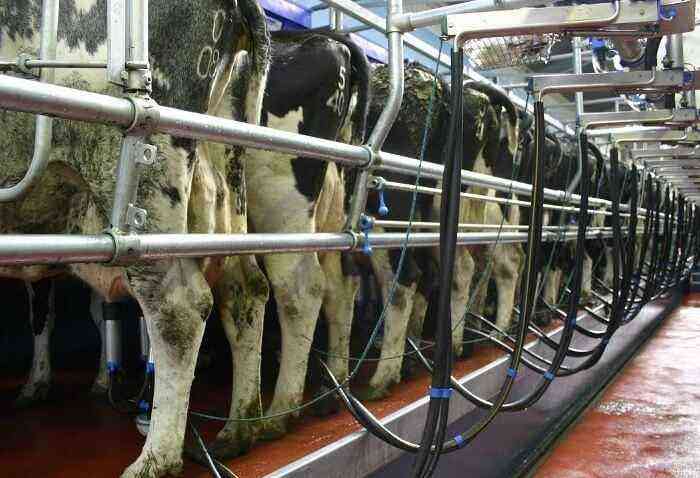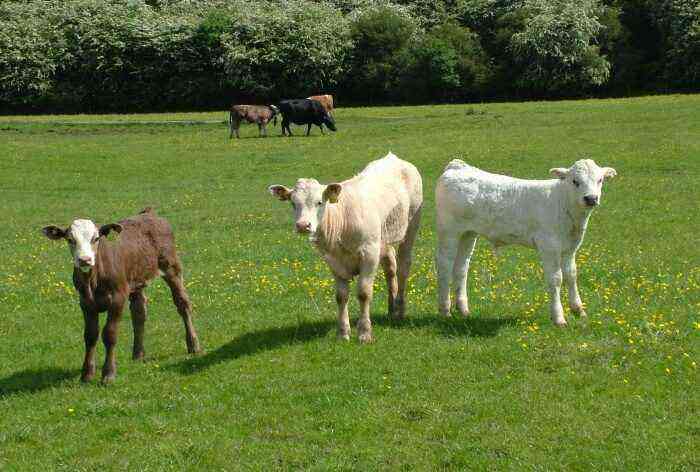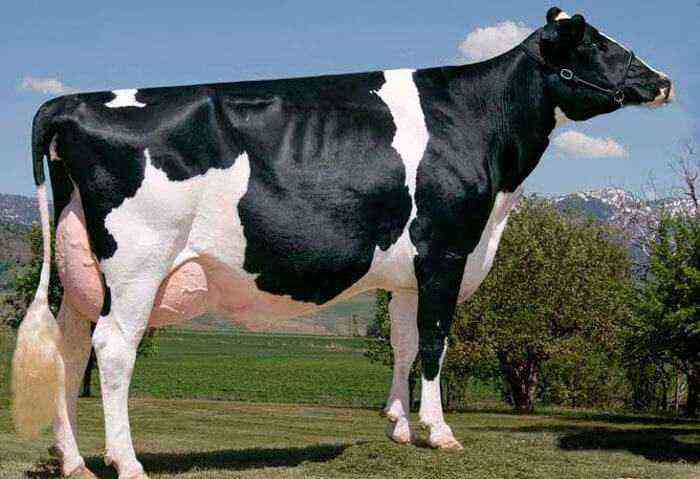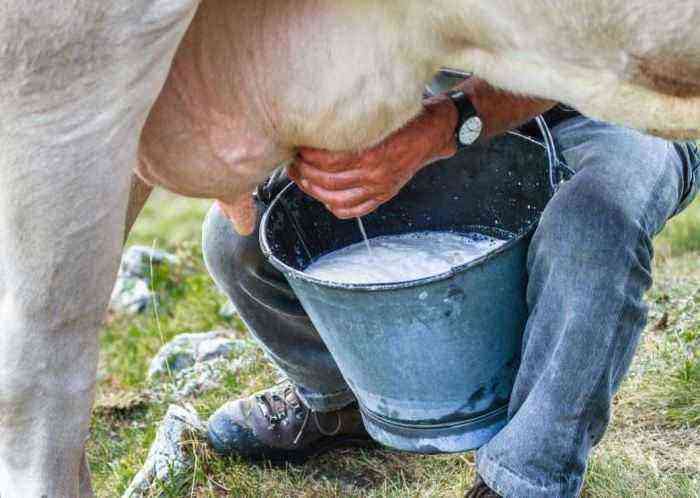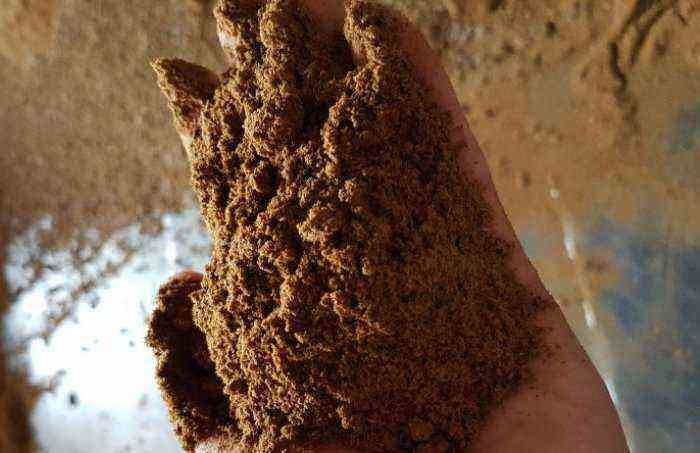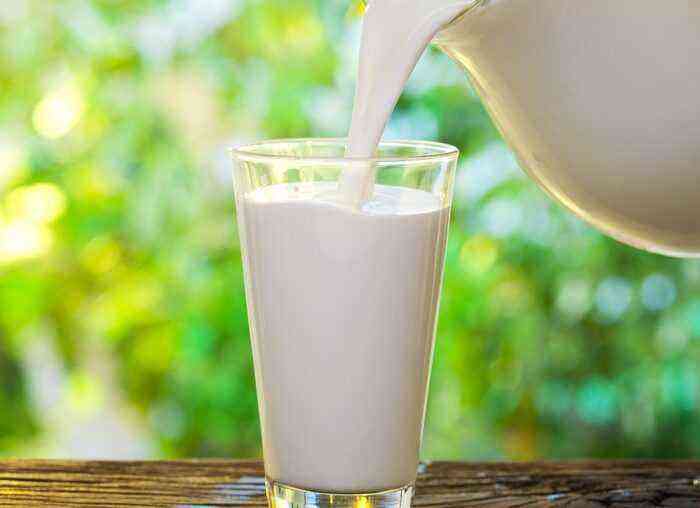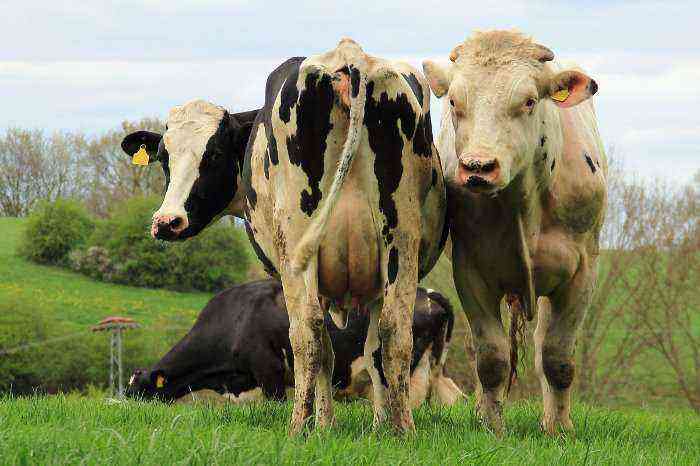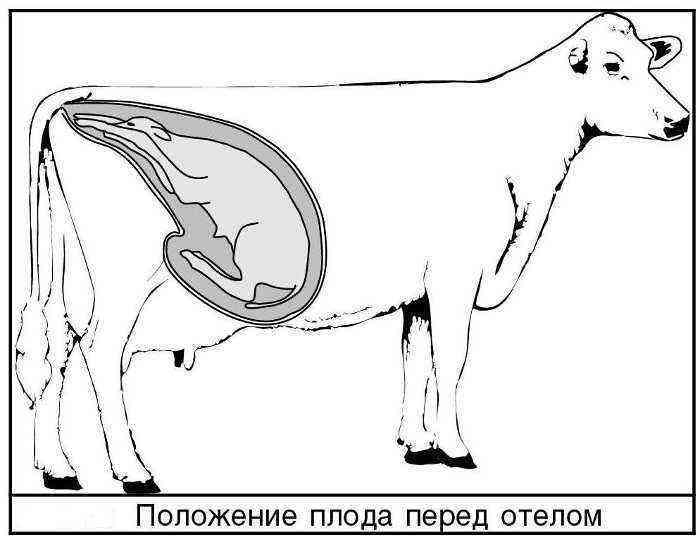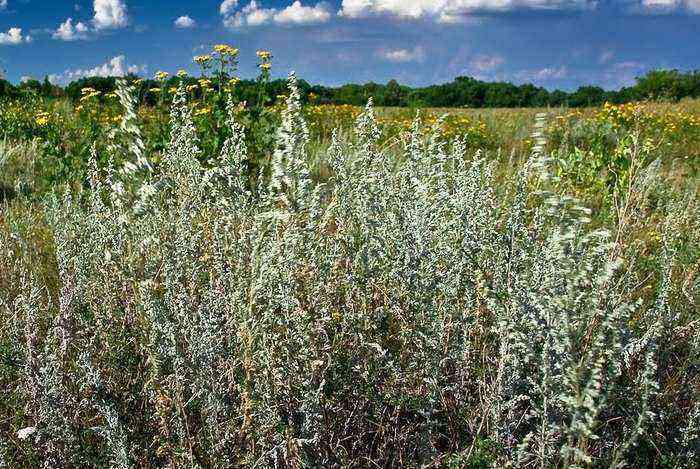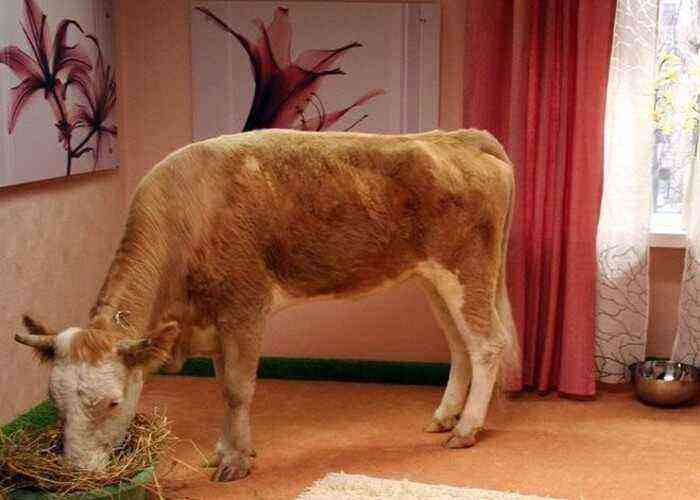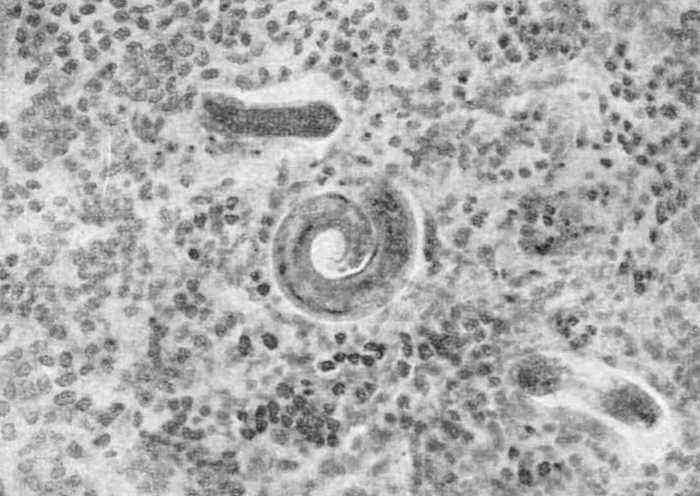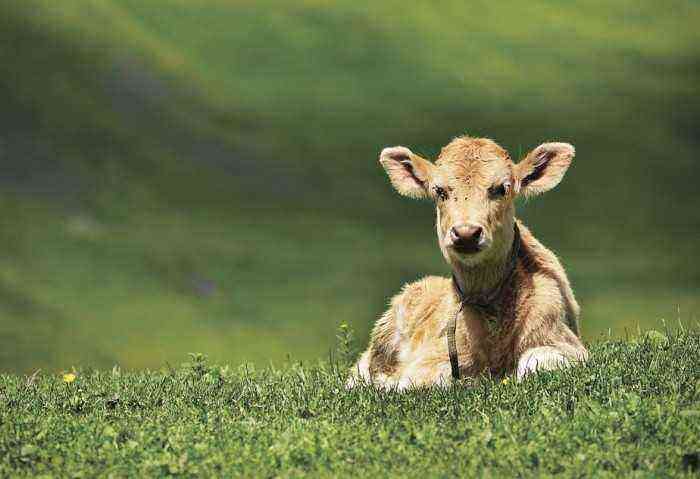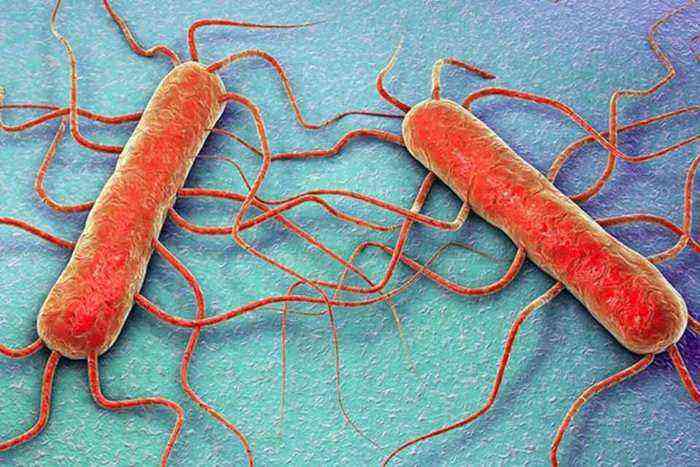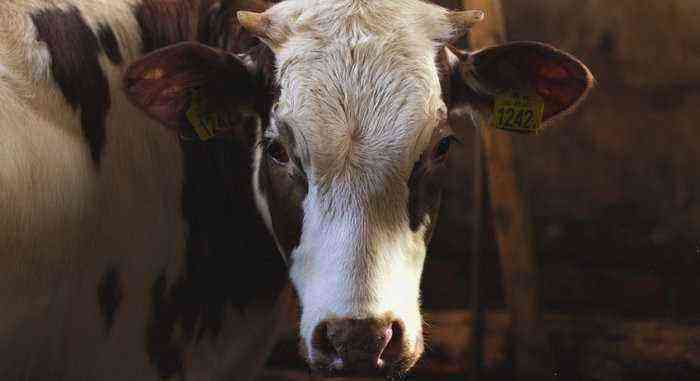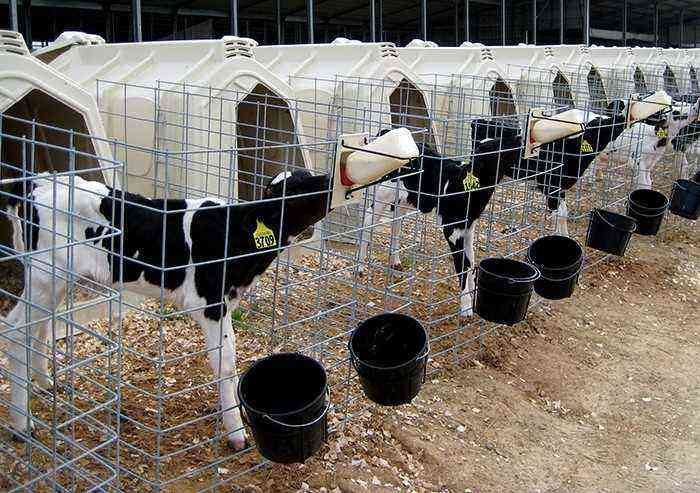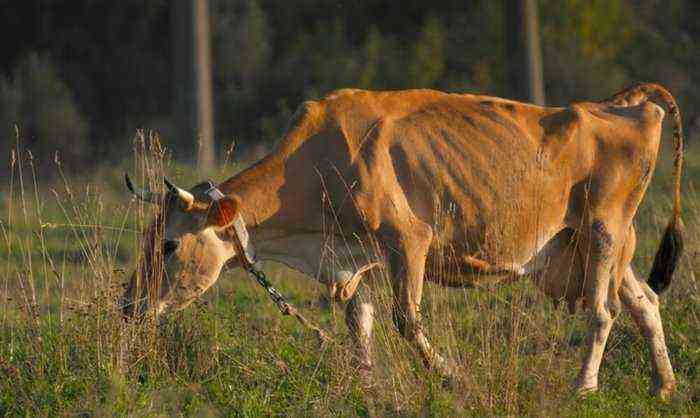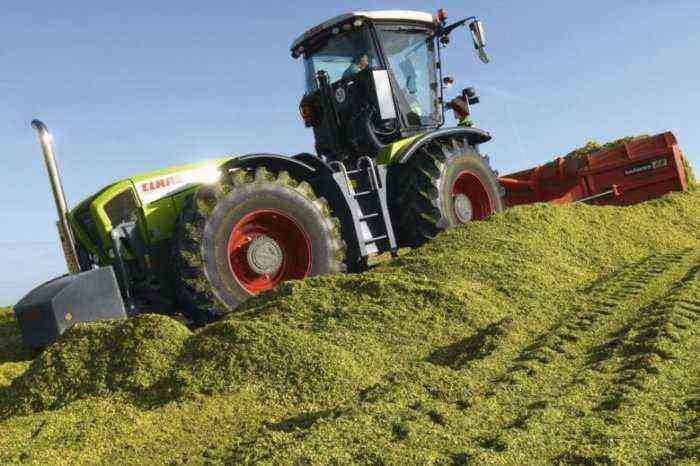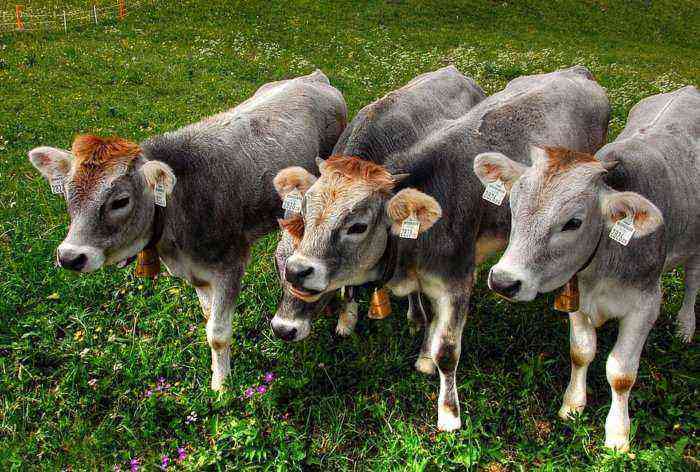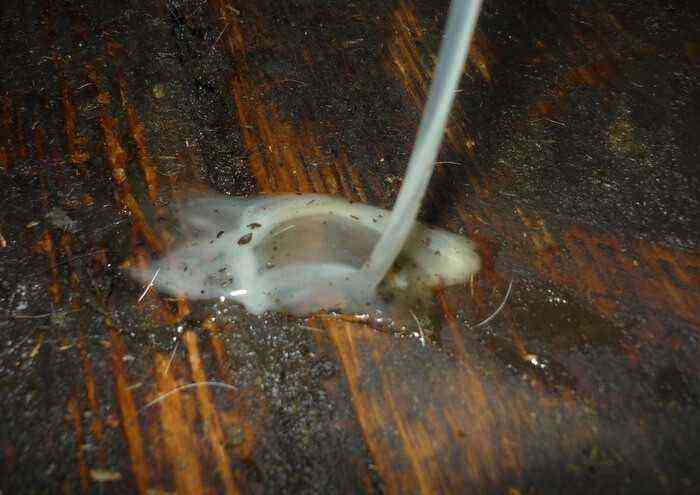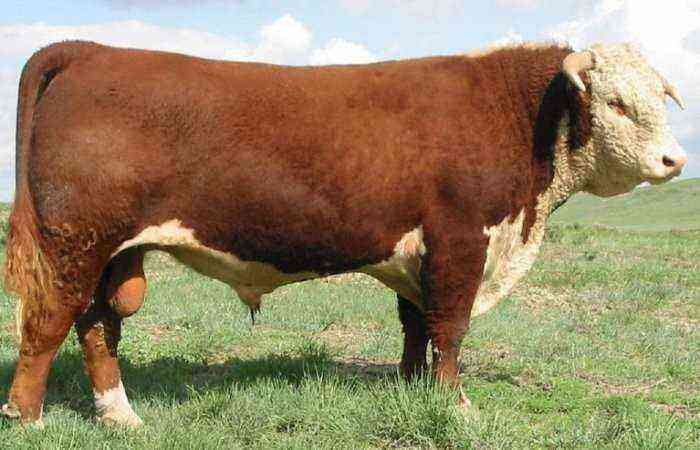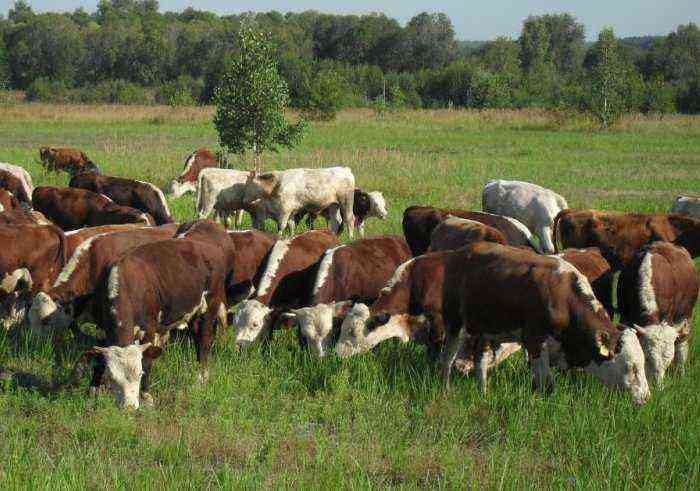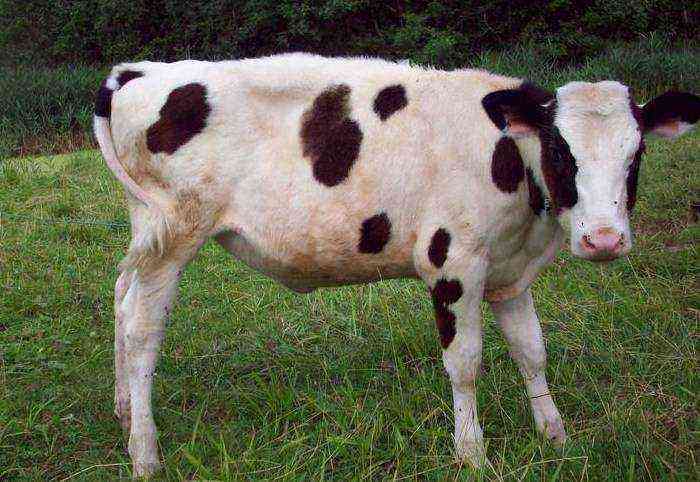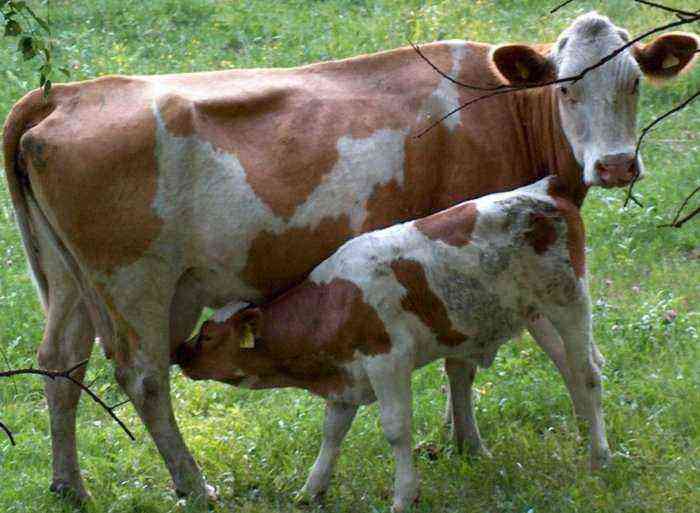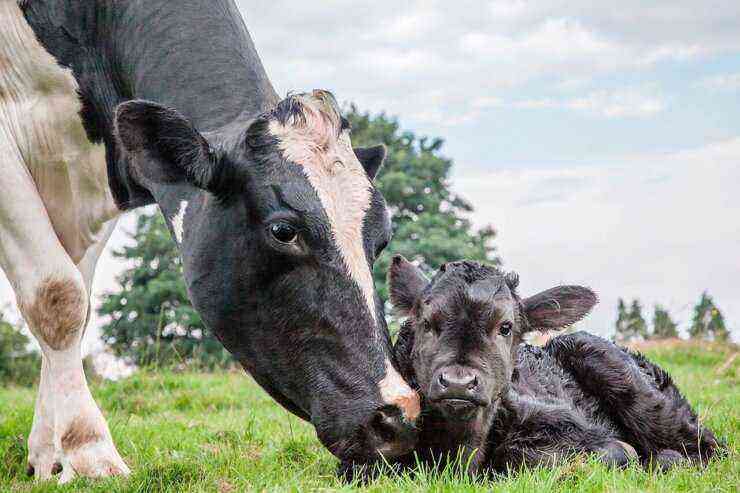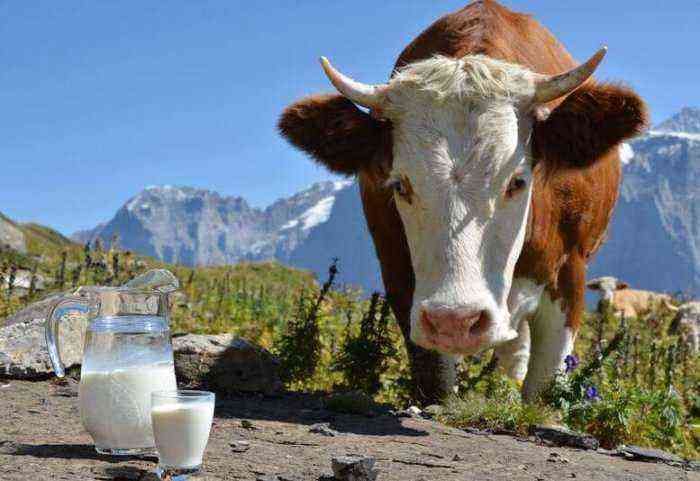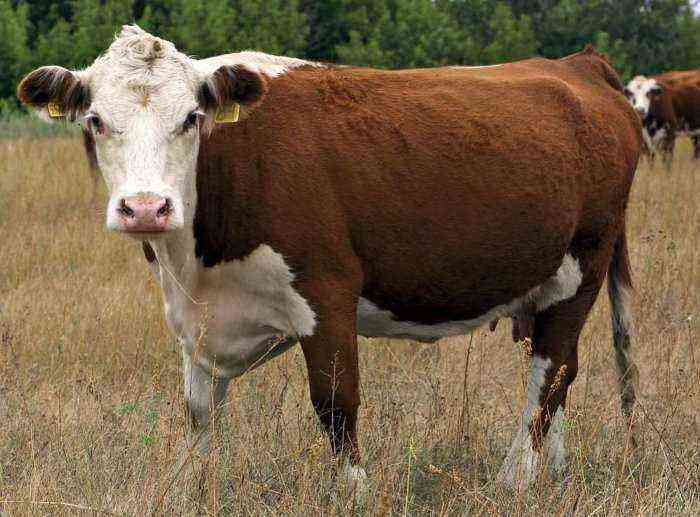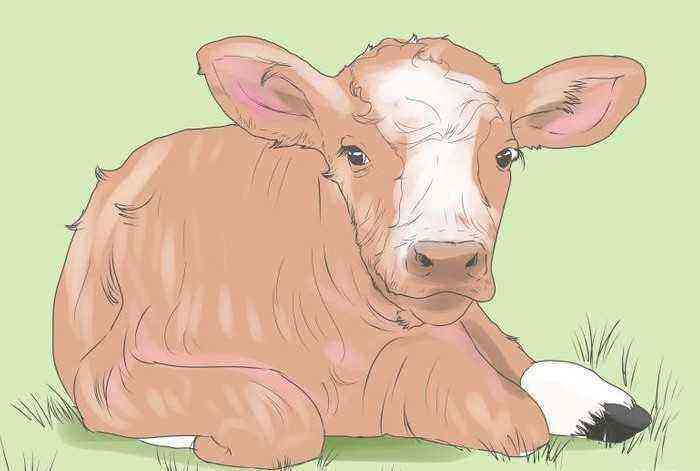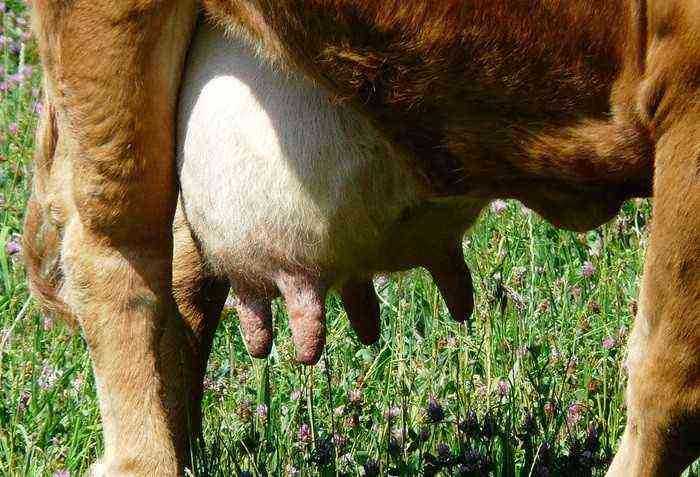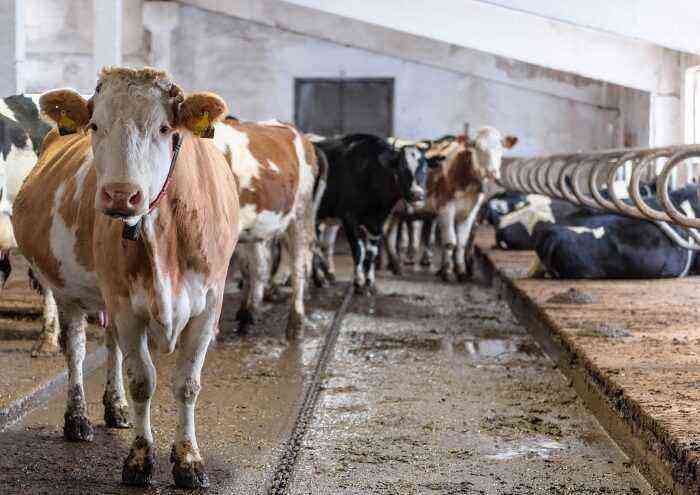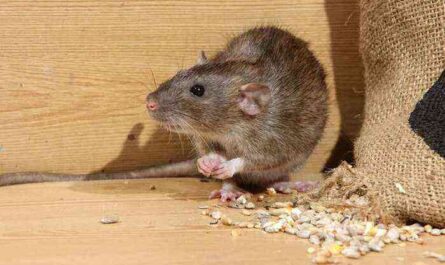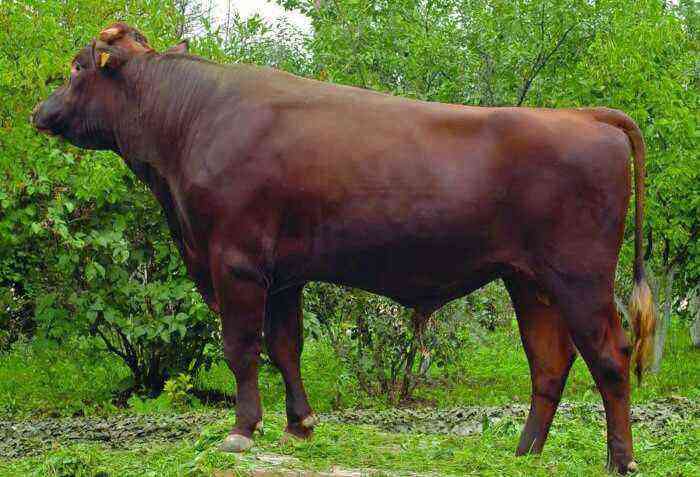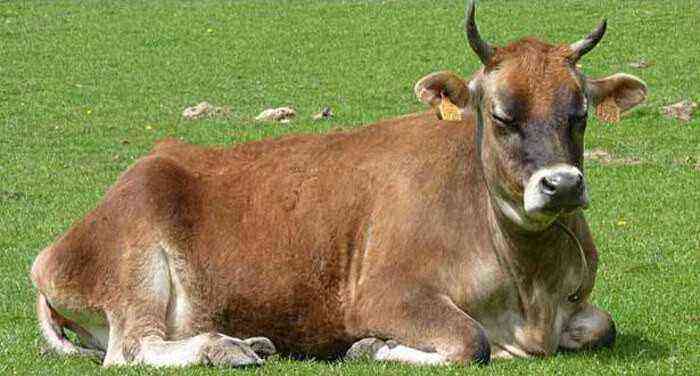The profitability of a farm is directly dependent on the quality of milk that cows give. This product is highly valued – baby food, cheese, cottage cheese, butter are made from it. But if the animal is sick or there are some disorders in its body, this also affects the quality of the product. For example, if a cow has blood in her milk, this symptom may indicate serious diseases of the udder. Having discovered such a problem, you need to immediately understand its causes.
Udder pathologies
Causes
Blood in cow’s milk is a warning sign. It may indicate udder pathologies:
- development of mastitis.
- Vascular problems.
- Bruising of the udder or one of its shares.
- Mechanical damage to the nipples.
To understand what is happening with the cow, it is necessary to consider each of the problems in detail.
Mastitis
Cows often develop mastitis, an inflammation of one or more udder lobes. Cows are especially susceptible to this disease after calving, when their immunity is reduced. There are different types of mastitis, but almost all of them have the same symptoms:
- The udder enlarges and becomes hot.
- On palpation, a lump is felt.
- The animal’s milk yield is reduced.
- Appetite disappears.
- The cow is lethargic.
- Often, milk after decanting and settling in the cold changes its consistency.
Note. There is also a hidden form of mastitis, which is diagnosed only with the help of milk samples and special tests.
There are many reasons for the development of inflammation in the udder:
- Nipple injury.
- Poor conditions of detention – damp, cold room.
- Infectious diseases of other organs, such as the uterus.
- Decreased immunity of the animal.
- Inadequate diet.
blood in milk
Blood in milk can occur with advanced forms of mastitis. If the farmer notes a decrease in milk yield, loss of appetite and lethargy in his cow, you should contact your veterinarian.
Vascular disorders
Blood in milk from cows may indicate weakness of the vascular walls. This happens when certain vitamins are lacking in the animal’s diet. If, after milking, the milkmaid notices that the milk has turned pink, but there are no other symptoms of deterioration in the animal’s well-being, there is no reason to panic. Perhaps, during the impact on the udder with the apparatus or hands, the vessel burst, due to which blood began to ooze. You should watch the cow for 2-3 days. In most cases, this situation does not repeat itself. However, it is worth consulting with a veterinarian how to strengthen the vessels of the animal. Usually animals are prescribed:
- Vitamin C.
- Vitamin K.
- Calcium.
- Hemostatic agents.
Reference. It is necessary to monitor the diet of the cow so that she receives all the useful substances and trace elements, then her vessels will become more durable.
Bruises
In the pasture, cows sometimes hurt each other
In the pasture, cows sometimes injure each other – they butt, kick. In this case, the udder may suffer, as a result, an internal hematoma is formed, which is not always visible to the naked eye. In some cases, compaction and an increase in the affected lobe are found. Touching the udder is painful.
Attention! With bruises of the mammary gland, blood in the milk is found most often in the form of clots.
If a cow has blood clots in her milk, but her condition seems normal, it is probably an udder hematoma. The animal needs to be kept quiet for a few days. On the first day, a cooling compress should be applied to the site of the bruise, and on the next day – vodka. For better resorption of the hematoma, a light massage of the affected lobe and the application of an iodine mesh are recommended.
Reference. The accumulation of blood in the tissues of the breast can lead to mastitis.
Udder damage
When the milk tank is damaged, blood is also found in the milk. How can an animal get hurt?
- During a walk. Animals cling to the udder for sharp objects – branches, stones.
- During milking by the machine.
- With inaccurate manual milking.
Cracks in the nipples are another reason for the appearance of bloody inclusions in cow milk. They are formed due to improper care of the milk tank. Before and after milking, you need to rinse the teats with warm water and inspect them for microcracks. Often they are formed due to dry skin. Over time, the affected tissues swell, and the damage becomes deeper. The farmer should be alert to the restless behavior of the animal during milking and when touching the nipples.
Attention! The appearance of microcracks on the nipples is associated with the risk of infection and the development of mastitis.
How to prevent the occurrence of mastitis?
Any injury to the udder, including bruises, often causes mastitis. Prevention of this disease must be given constant attention. What do we have to do:
Udder care – prevention of mastitis
- Carefully care for the mammary gland and nipples of the cow – wash with warm water, wipe with a clean cloth.
- Keep the animal in good conditions – warm, on soft bedding, avoid drafts.
- Provide the cow with high-quality nutrition, which will favorably affect her immunity.
- To prevent the development of stagnant processes in the udder – regularly milk the cow, express the entire volume of milk.
- Regularly examine the mammary gland for minor damage and seals.
- Control any changes in the consistency, color of milk.
- Treat the gland for prevention.
Breast processing
Udder treatment is a preventive measure against mastitis. It includes not only washing the mammary gland before and after milking, but also other manipulations. For example, lubricating the nipples with petroleum jelly, a special ointment, or an oil-paraffin mixture helps prevent the formation of microcracks.
In case of damage to the nipples – wounds, cracks, it is necessary to treat them with any of the following means:
- Iodine.
- hydrogen peroxide.
- Rivanol.
After this procedure, a softening cream or regular petroleum jelly is necessarily applied.
If traces of blood are found in cow’s milk, you need to figure out what provoked the problem. A careful examination of the breast and nipples will reveal skin lesions, if any. The farmer should watch the animal – if it has other alarming symptoms of the disease. If you suspect mastitis, you should invite a veterinarian to examine the cow.
